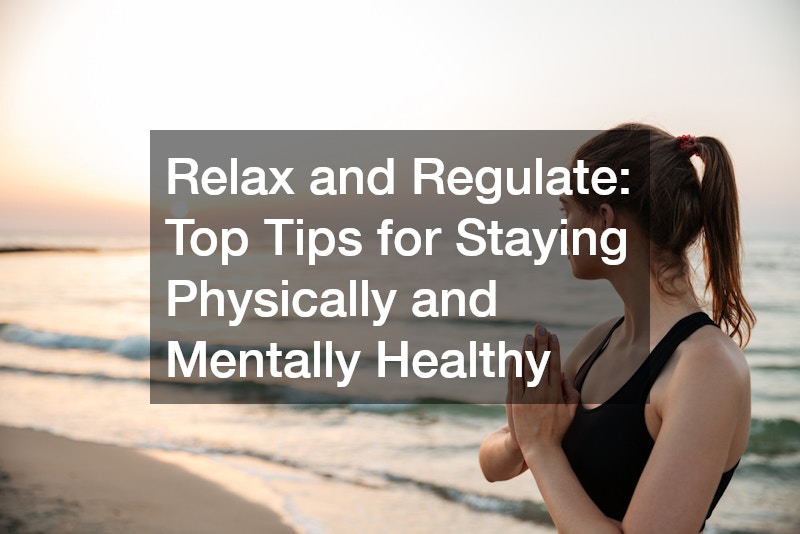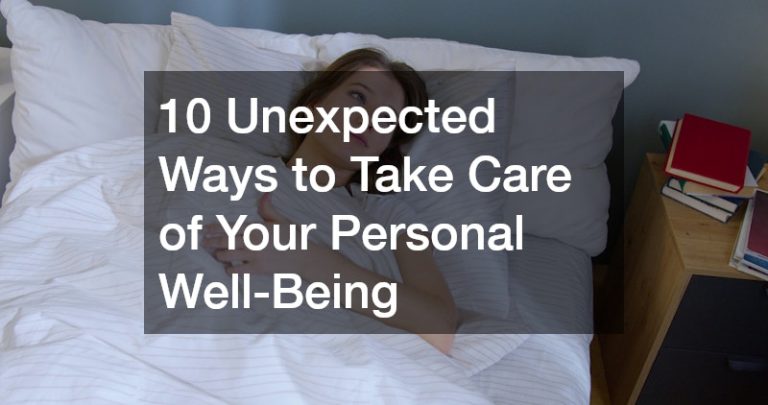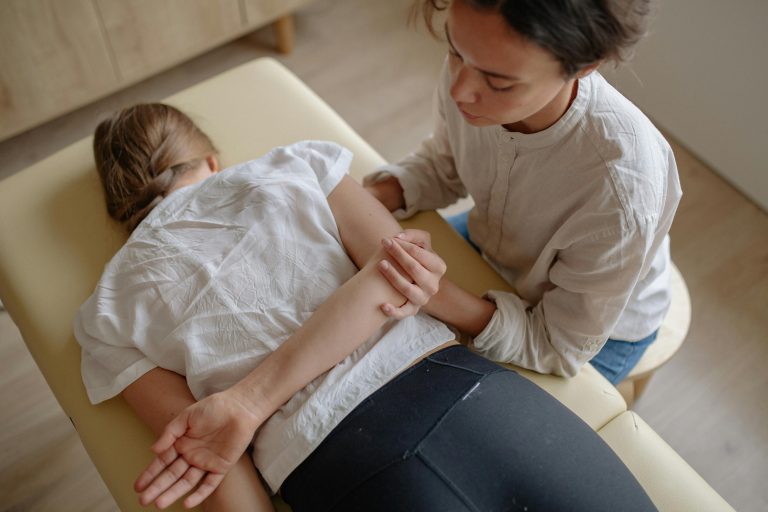In our fast-paced world, maintaining both physical and mental health has never been more critical. The concept of “relax and regulate” encapsulates the importance of balancing our emotional well-being with our physical health. Whether you’re dealing with the stresses of work or encountering challenges related to conditions like Down syndrome, it’s essential to cultivate habits that promote overall wellness.
One effective approach to regulate our mental state is through therapies like neurofeedback therapy for trauma. This innovative method can help individuals manage their stress responses better, making it easier to relax. In addition to therapeutic interventions, we must also consider practical lifestyle adjustments, from exercise to nutrition, in our quest for comprehensive health.
Along with focusing on individual practices, the role of social interaction, access to nature, and even technology can make significant contributions to our overall well-being. Ultimately, achieving balance in our lives is a multifaceted challenge that requires consistent efforts. By understanding how to relax and regulate our bodies and minds, we can pave the way for improved quality of life.
1. How Can I Reduce Stress Effectively?
Reducing stress requires a combination of strategies, from mindfulness methods to physical activities. Incorporating mindfulness techniques such as meditation or yoga can significantly lower stress levels by allowing you to reconnect with your body. Pairing such endeavors with regular visits to eye doctors can also help if stress manifests physically, leading to vision problems.
Another effective method for reducing stress is engaging in regular physical exercise, which releases endorphins—the body’s natural stress relievers. Activities like using a swim spa or trying a cold plunge can invigorate your body and refresh your mind. Moreover, not only do these practices help in minimizing stress, but they also contribute to better sleep quality, setting the stage for relaxation and regulation in your life.
Finally, introducing structured routines can also diminish daily stressors. Simplicity in your day-to-day schedule can mean that time for relaxation is intentionally carved out. Ultimately, the less clutter in your life, the more space you’ll have for peace and tranquility.

2. What Are the Best Practices for Mental Regulation?
To achieve mental regulation, learning new skills and behaviors is paramount. Techniques such as neurofeedback therapy for trauma have emerged as effective tools to help individuals learn how to control their emotional responses. Consistency in practice plays a huge role in reaping the benefits of these techniques.
Another key practice is monitoring your thoughts and emotions. Keeping a journal where you express your feelings can act as a great outlet and allows for self-reflection. In addition, it’s wise to surround yourself with supportive individuals who understand the importance of mental health, as social interactions can greatly enhance your ability to relax and regulate.
Incorporating hobbies into your routine also proves beneficial for mental regulation. Activities such as painting, playing music, or gardening allow an escape from daily pressures. Thus, engaging in fulfilling activities nurtures creativity, which is essential for mental health.
3. How Can I Improve My Sleep Quality?
Your sleep quality has a direct correlation with your ability to relax and regulate. Factors such as excessive screen time, stressful living situations, and even health conditions require your attention for better sleep. Regular consultations with professionals, such as orthodontists for those facing jaw issues or dental implants and crowns for tooth discomfort, can significantly impact one’s ability to achieve restful sleep.
Establishing a calming bedtime routine can pave the way for improved sleep quality. Simple practices such as dimming the lights, listening to soothing music, or employing water sanitizing methods in your environment can create a serene atmosphere conducive to sleep. Moreover, avoiding caffeine in the hours leading up to bedtime can also provide the body with an ease that promotes restfulness.
Lastly, ensuring your bedroom is a sanctuary for rest is crucial. Keeping the space tidy, utilizing comfortable bedding, and adjusting the room temperature can all contribute to creating an ideal sleeping environment. Your space should feel inviting and facilitate relaxed feelings of security and comfort.
4. What Are Effective Ways to Incorporate Exercise?
Regular exercise is an essential component of a holistic health approach. Incorporating even 30 minutes of physical activity several times a week can make significant strides in improving both your physical and mental health. Techniques like cold plunge therapy after a workout can amplify recovery efforts, enhancing the overall body wellness experience.
Finding enjoyable types of exercises will encourage consistency in your routine. Whether it’s swimming, running, or attending group fitness classes, the key is discovering an activity you genuinely enjoy; this dedication leads to a more sustainable practice. Not only does physical activity contribute to reducing stress, but it also encourages neuroplasticity, which can enhance mental regulation.
Inclusive activities, such as engaging family members or friends in your exercise regime, can also promote social interaction, further enhancing mental health benefits. Try organizing swim spa sessions or jogging in a park with loved ones to nurture bonds while also prioritizing health. When you combine effective exercise with socializing, you tackle two pillars of well-being simultaneously.

5. How Can Diet Influence Mental and Physical Health?
Diet plays a pivotal role in overall health, affecting how we feel both physically and mentally. Consuming a balanced diet rich in fruits, vegetables, lean proteins, and whole grains can stabilize mood fluctuations. Foods high in omega-3 fatty acids, such as fish, have been linked to brain health and can particularly assist individuals recovering from trauma and seeking to relax and regulate their emotional responses.
Being mindful of sugar and processed food intake is equally essential, as these can lead to energy spikes followed by crashes that negatively affect mood. Incorporating nutrient-dense snacks—like nuts, yogurt, or fruit—can maintain steady energy levels. Moreover, understanding your body’s unique needs is essential; for individuals with down syndrome or other specialized requirements, personalized dietary assessments can improve overall wellness.
Staying hydrated is another critical factor to consider. Consuming an adequate amount of water daily enhances cognitive function, boosts energy levels, and improves digestion. Incorporating hydration habits, like water sanitizing systems in your home, further promotes clean and safe drinking water available at your convenience, ensuring you maintain optimal health.
6. What Role Does Social Interaction Play?
Human beings are inherently social creatures, and interactions with others can have profound implications on our mental and physical health. Regularly spending time with friends and family fosters a sense of belonging and reduces feelings of loneliness, promoting emotional health. Establishing relationships can also provide support during times of trauma; for example, neurofeedback therapy for trauma thrives in a community that understands its benefits.
Participating in group activities, such as join workshops or classes, can easily integrate interactions into your life. Whether it’s a book club, fitness class, or crafting group, these connections serve as a buffer against stressors. Engaging in social situations not only helps maintain relationships but also encourages personal growth and makes it easier to relax and regulate your emotions during difficult times.
Ultimately, creating quality social interactions is vital for mental equilibrium. Genuine relationships nourish the mind and spirit, leading to greater resilience when facing challenges. Finding common interests and participating in shared experiences reinforces bonds that can uplift your overall emotional state.

7. How Do I Balance Work and Personal Life?
Striking a balance between work and personal life is essential for overall well-being. Start by setting clear boundaries regarding work hours; it’s important to designate time specifically for work engagements and differentiate it from personal time. Creating rituals for transitioning from work to home—like taking a cold plunge or engaging in a familial activity—can signal the brain to change its focus from work mode to relaxation mode.
Prioritizing tasks based on urgency and importance can also help you allocate your time more effectively. Use tools like planners, digital calendars, or task management apps to keep track of obligations and free up mental space for relaxation and personal pursuits. By utilizing these strategies for organization, you enhance productivity while preventing overwhelm.
Lastly, don’t hesitate to communicate openly with colleagues or managers about your workload and capabilities. It’s significant to express your needs to prevent burnout and maintain a balanced approach to work and home responsibilities. When you feel in control, you can adequately relax and regulate your mental health, leading to improved job satisfaction and personal contentment.
8. What Are the Benefits of Nature and Outdoors?
Connecting with nature has profound benefits for mental and physical health. Spending time outdoors, whether hiking in a forest or walking on a beach, can significantly reduce stress levels, leading to a more relaxed state. Nature has a unique ability to promote mindfulness and allow individuals to take a step back from daily distractions, which is essential in fostering the capacity to relax and regulate effectively.
Additionally, outdoor activities often provide a great opportunity to engage in exercise. Activities like jogging, biking, or even gardening allow you to stay active while enjoying the serenity nature has to offer. Utilizing facilities like a swim spa can further enhance your outdoor experiences, providing an added layer of relaxation amidst natural settings.
Being in nature has also been linked to improved mental clarity and creativity, which can be crucial when managing stressors. The calming aura provided by green spaces can enhance feelings of happiness and connectedness. Ultimately, anyone can benefit from introducing more nature into their life, whether through simple walks in the park or weekend nature adventures.
9. How Can Technology Help in Relaxation and Regulation?
Modern technology provides a plethora of tools designed to enhance relaxation and mental regulation. Smartphone applications for meditation, virtual therapy sessions, or fitness tracking can guide users on their wellness journey effectively. With advancements in technology, employing neurofeedback therapy for trauma is easier than ever, making it accessible to more individuals seeking recovery.
Moreover, devices such as smart home systems can help you cultivate a serene environment conducive to relaxation. Automating lighting, temperature, and sound can create an atmosphere ideal for unwinding after a long day. Utilizing a swim spa equipped with mood-enhancing technology can transform your home into a personal wellness oasis.
However, it is crucial to maintain a healthy balance regarding technology use. Set limits on screen time and engage with technology in ways that serve your relaxation goals, rather than detract from them. Ensuring that technology serves as an aid rather than a distraction will allow you to continue your path toward mastering how to relax and regulate your mental health.

10. What Are the Common Barriers to Relaxation?
Recognizing barriers to relaxation is the first step in overcoming them. Factors such as a chaotic schedule, health issues, or unfulfilled obligations can hinder your ability to unwind. Conditions like flatfoot may cause discomfort, which can lead to irritability and further complicate relaxation efforts, highlighting the need for appropriate treatments like flatfoot reconstruction.
The pressure to constantly perform, both at work and home, often builds considerable stress that disrupts relaxation. It’s crucial to prioritize rest when faced with overwhelming responsibilities, adopting practices that allow for self-care. Acknowledging that everyone has limitations can help reshape our perceptions about productivity and leisure.
External factors like noise, clutter, or unresolved conflicts can also impede relaxation. Creating a peaceful environment free from distractions—whether through water sanitizing systems to ensure a clean setting or decluttering your space—can foster a sense of serenity. Continually evaluating and addressing these barriers enables you to cultivate a lifestyle centered on relaxation and regulation.
Conclusion
Incorporating relaxation and regulation strategies into our lives goes beyond simple techniques; it encompasses a holistic approach tailored to our unique circumstances. The fusion of personal practices—like exercise, balanced nutrition, and social interactions—can yield transformative results in mental and physical health. By regularly engaging with techniques such as neurofeedback therapy for trauma and prioritizing overall wellness, individuals can find balance amidst daily stressors.
Furthermore, nurturing relationships, exploring nature, and leveraging technology promote a healthier lifestyle. Prioritizing our mental and physical well-being isn’t merely a luxury; it’s an absolute necessity for a fulfilling life. By carrying forward the lessons learned about how to relax and regulate, we can lead happier, healthier, and more balanced lives.






